
Roots
The whisper of history often settles upon our curls, coils, and waves, inviting a quiet contemplation of how our ancestors, long before the advent of modern science, tended to their textured strands. This journey into the past reveals a deep, intuitive understanding of hair’s very being, far removed from the fleeting trends of today. It is a story rooted in connection – to the earth, to community, and to the inherent rhythms of the body. We begin by unearthing the fundamental wisdom that shaped ancient hair care, acknowledging that beneath every intricate style lay a profound knowledge of the hair itself.
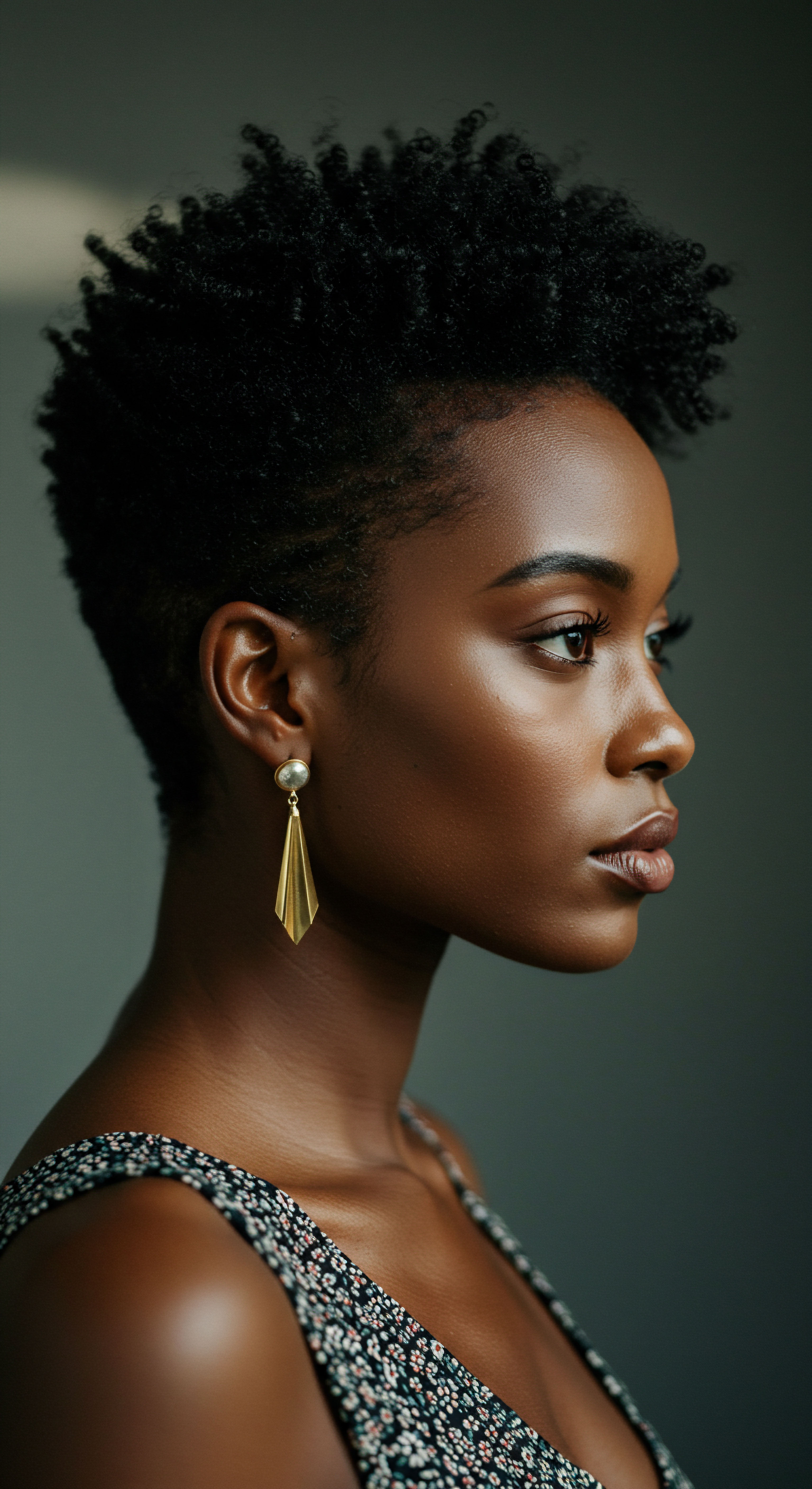
What Defines Textured Hair Across Time?
Textured hair, with its remarkable spectrum of curls, coils, and kinks, possesses a unique anatomical blueprint that distinguishes it from straighter hair types. At its core, the shape of the hair follicle dictates the curl pattern. A flatter, more elliptical follicle typically produces curlier hair, while a rounder follicle gives rise to straighter strands. This follicular architecture means that the hair shaft itself is not perfectly cylindrical; instead, it exhibits a flattened, ribbon-like or oval cross-section.
This structural characteristic inherently creates points of weakness along the curl’s curve, making textured hair more susceptible to breakage and dryness compared to its straighter counterparts. Understanding this fundamental aspect of its construction is paramount to appreciating the traditional care practices that evolved to honor and protect it.
Beyond the follicle, the distribution of disulfide bonds within the hair’s keratin structure also plays a significant role in defining curl. These chemical bonds, responsible for hair’s strength and shape, are unevenly distributed in textured hair, contributing to its distinctive spirals. The outer layer of the hair shaft, the cuticle, also presents differently.
In textured hair, cuticle scales tend to be more raised, creating a less smooth surface. This elevated cuticle can lead to increased friction between strands and greater moisture loss, underscoring why traditional methods often prioritized sealing in hydration.
Traditional care for textured hair often centered on honoring its unique structure, particularly its tendency towards dryness and fragility.
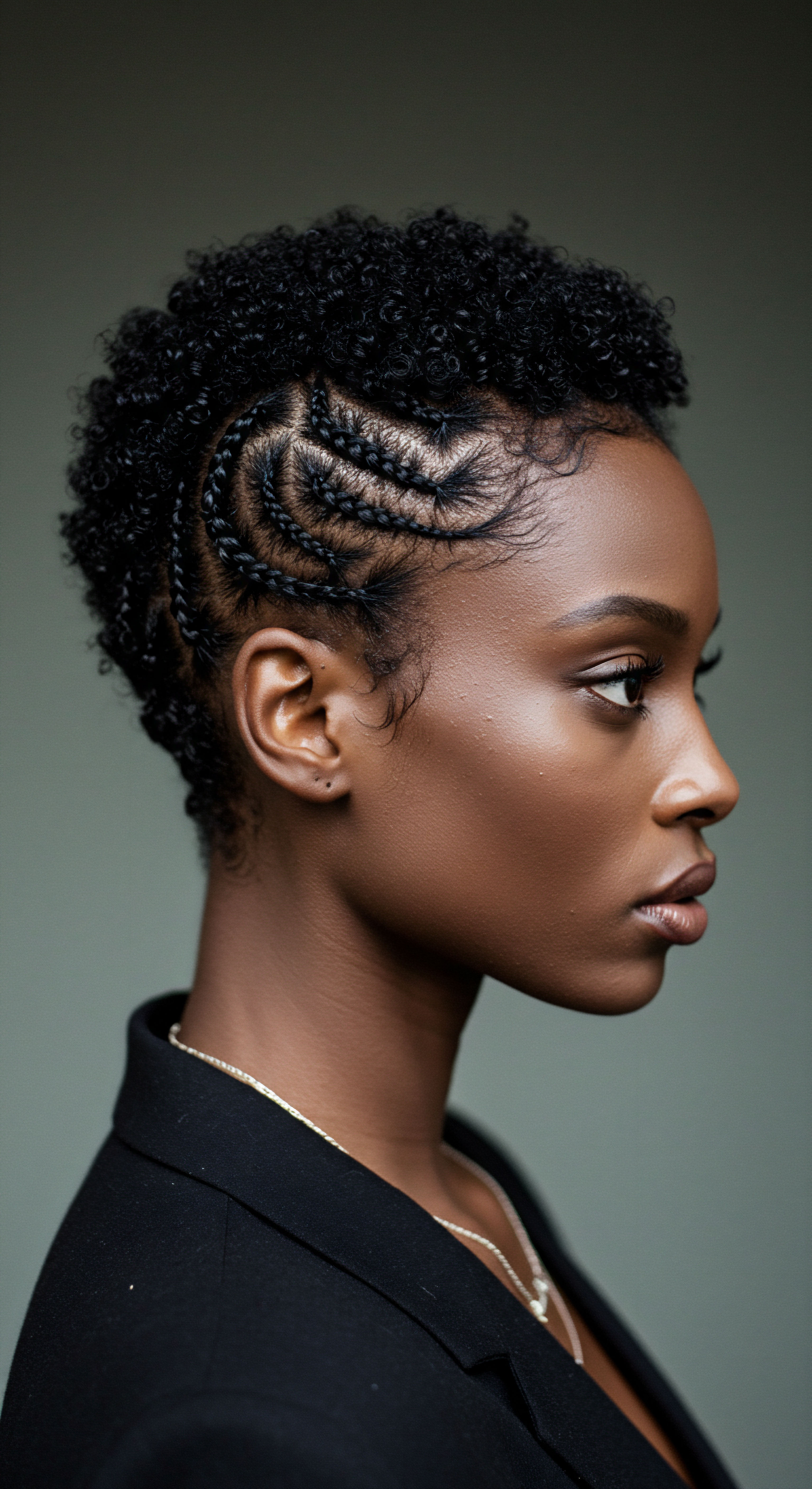
Ancient Classifications of Hair
While modern systems classify textured hair by curl pattern (e.g. 3A, 4C), ancient cultures held their own classifications, often tied to social standing, age, or spiritual belief rather than purely anatomical features. Hair was a living record, a visual language.
In many African societies, hairstyles served as markers of identity, indicating a person’s tribe, age, marital status, wealth, and even religious beliefs. For example, specific braiding patterns could signify a woman’s readiness for marriage or her community role.
Across various cultures, hair’s physical attributes, such as length or thickness, were imbued with symbolic weight. Long hair, for instance, was often seen as a sign of wisdom and spiritual connection in many Native American traditions. This cultural lens shaped how hair was perceived and, by extension, how it was cared for, emphasizing preservation and respect over mere styling.
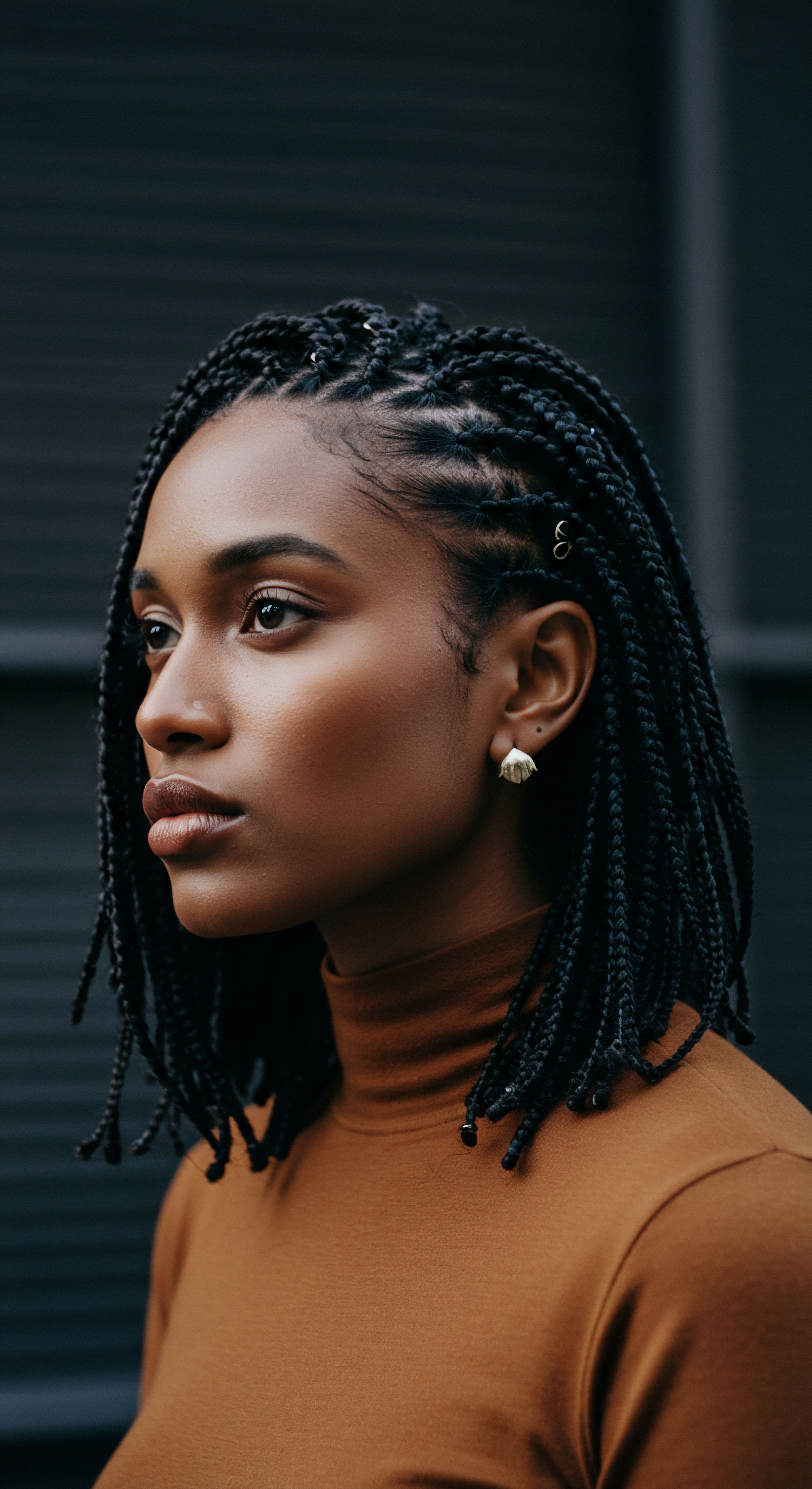
The Language of Ancient Hair Care
The lexicon of hair care in the past was deeply intertwined with the natural world. Terms were descriptive, often referencing plants, natural elements, or the actions of care itself. We might not find “co-washing” in ancient texts, but the concept of cleansing with conditioning agents was certainly present. The term “shampoo” itself has roots in the Hindi word “chanpo,” derived from the Sanskrit “chapit,” meaning “to press, knead, or soothe,” highlighting the importance of massage in traditional Indian hair rituals.
Understanding the properties of plants like Yucca Root for cleansing among Native American tribes, or Soapnuts (reetha) and Shikakai in India for their natural saponins, reveals a sophisticated empirical knowledge. These were not just ingredients; they were active agents understood for their effects on hair and scalp, forming the very vocabulary of care.
| Region/Culture West Africa |
| Common Ingredients Shea butter, various plant oils |
| Primary Function Moisturizing, sealing, styling |
| Region/Culture India |
| Common Ingredients Coconut oil, Amla, Shikakai, Neem, Brahmi |
| Primary Function Cleansing, conditioning, scalp health, growth stimulation |
| Region/Culture Native American Tribes |
| Common Ingredients Yucca root, bear grease, various herbs |
| Primary Function Cleansing, conditioning, pomade |
| Region/Culture Ancient Egypt |
| Common Ingredients Beeswax, castor oil, henna |
| Primary Function Styling, conditioning, coloring |
| Region/Culture Japan |
| Common Ingredients Camellia oil, rice water, green tea |
| Primary Function Shine, strength, hydration, scalp health |
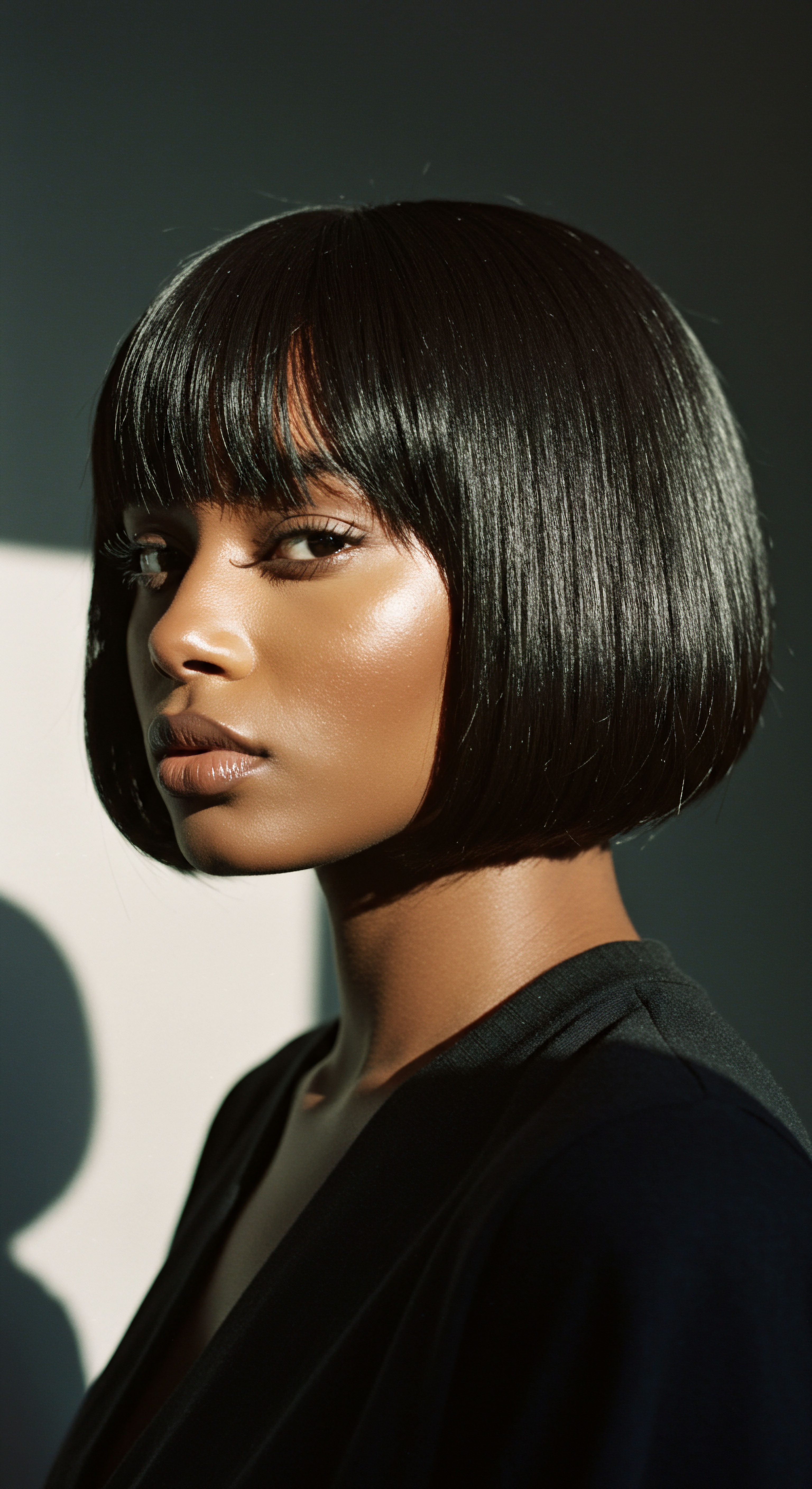
Hair Growth Cycles and Influencing Factors
Ancient observers, through generations of lived experience, recognized the cyclical nature of hair growth, even without modern scientific terminology. They understood that hair sheds and regrows, and that certain practices could encourage or hinder its vitality. While genetics play a substantial role in hair texture, thickness, and growth rate, environmental factors, diet, and care practices also hold sway. Traditional hair care systems, therefore, often incorporated holistic approaches that considered internal well-being alongside external application.
For instance, Ayurvedic practices in India emphasize a balanced diet rich in vitamins, minerals, and proteins to promote healthy hair growth, linking internal nourishment to external vibrancy. This deep understanding of interconnectedness, where the body’s internal state reflects on the hair, was a guiding principle, far preceding contemporary nutritional science.
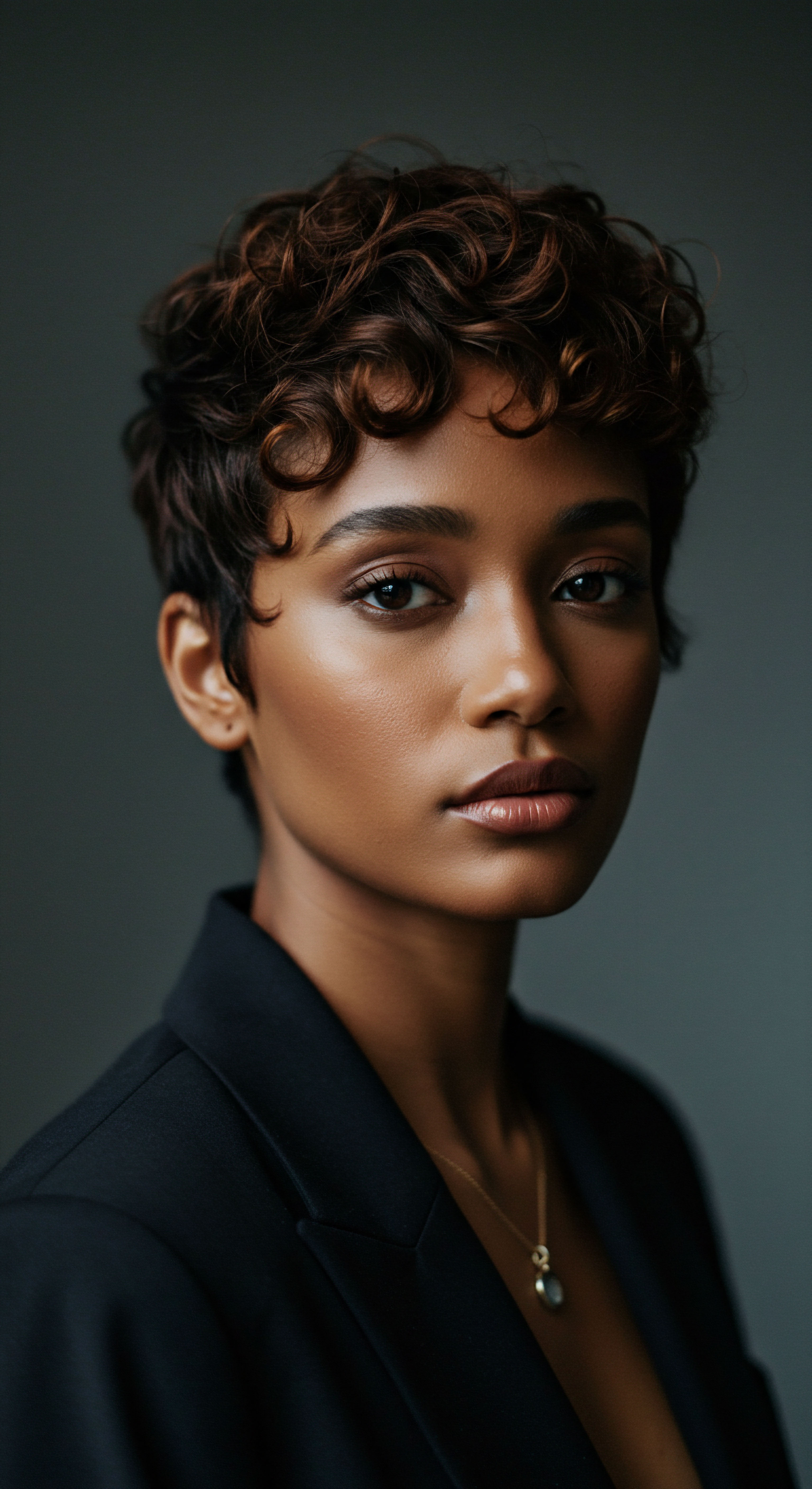
Ritual
Stepping from the foundational knowledge of hair’s very composition, we now approach the daily and periodic practices that gave life to ancient hair care philosophies. This section invites a closer look at the rituals themselves, the deliberate movements, the chosen tools, and the transformative power held within these ancestral routines. Here, we uncover the practical wisdom that allowed people to maintain their textured hair, not as a burden, but as a canvas for cultural expression and a testament to enduring health. The methods were often gentle, slow, and deeply mindful, a stark contrast to the quick fixes of our contemporary world.

How Did Ancient Cleansing Practices Differ?
The act of cleansing textured hair in the past was a thoughtful, often less frequent, process than modern daily shampooing. The goal was not to strip the hair entirely, but to purify the scalp and strands while preserving natural moisture. Many traditional cleansing agents were plant-based, harnessing nature’s gentle detergents.
- Yucca Root ❉ Native American communities used yucca root, known for its saponin content, to create a natural lather for cleansing both hair and body. This approach cleaned without harshness, leaving hair conditioned.
- Soapnuts (Reetha) and Shikakai ❉ In India, these natural ingredients, often boiled and strained, formed effective cleansers. They are rich in saponins, which produce a mild lather, gently purifying the hair while maintaining its natural oils. This practice aligns with modern co-washing principles, where conditioner-like agents cleanse without stripping.
- Egg Yolk ❉ Some traditions even employed egg yolk as a cleanser. The lecithin within egg yolk acts as an emulsifier, helping to lift dirt and grease, leaving hair clean and shiny. This ancient method points to an intuitive understanding of basic chemistry.
These methods demonstrate a clear understanding of the need to retain the hair’s inherent moisture, a critical consideration for textured hair, which is prone to dryness. The focus was on balance, respecting the hair’s delicate equilibrium.
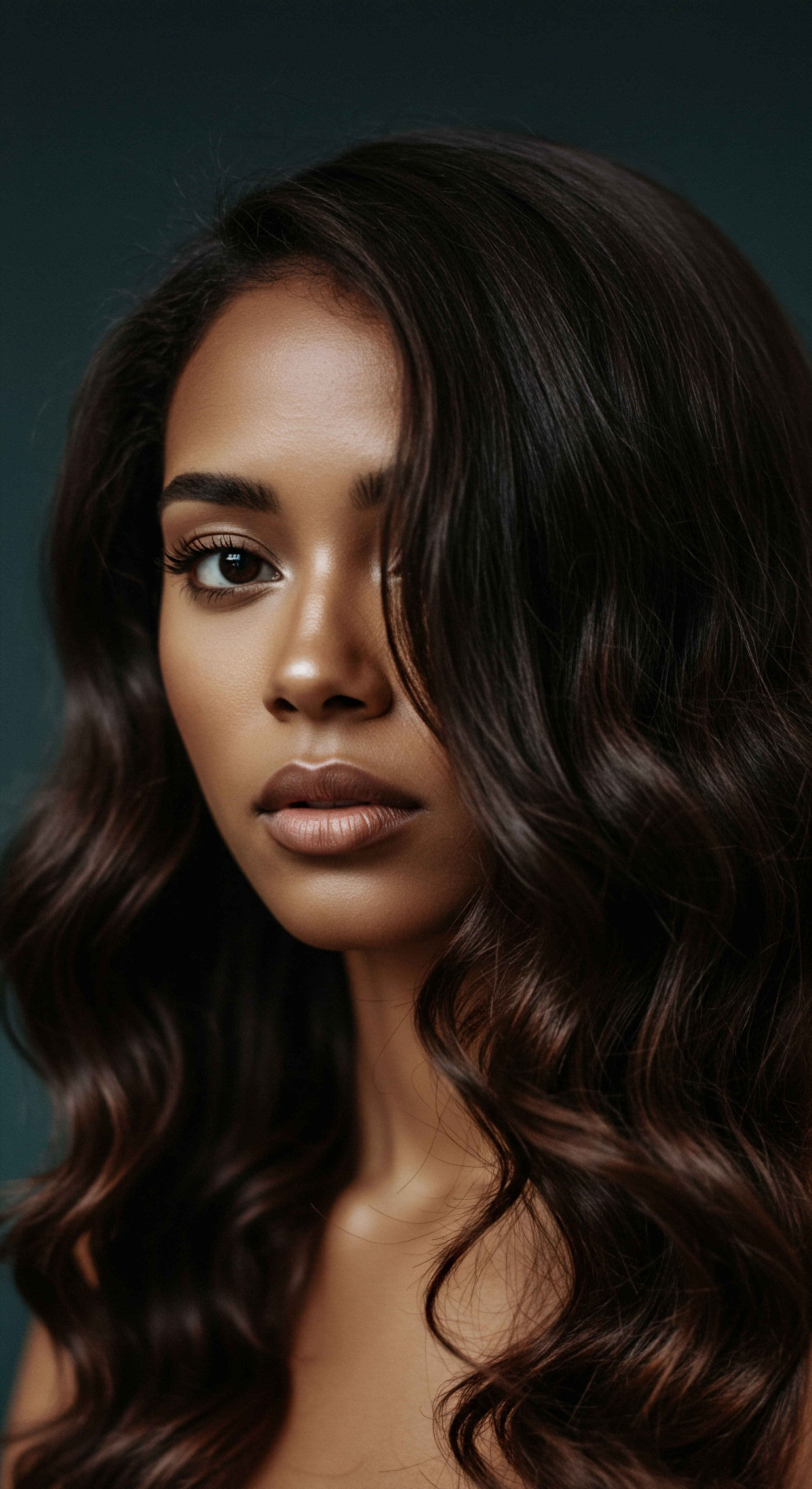
What Tools Aided Traditional Hair Care?
The tools of ancient hair care were often handcrafted, reflecting the intimate relationship between the individual and their hair. These implements were not merely functional; they were extensions of care, often possessing aesthetic or symbolic value.
Combs, for instance, were meticulously carved from natural materials such as bone, shell, horn, wood, or tortoise shell. These wide-toothed combs were ideal for detangling textured hair gently, minimizing breakage. The practice of detangling from the ends upwards, a modern recommendation for textured hair, was likely an intuitive part of these ancient routines.
Beyond combs, a variety of adornments served both practical and decorative purposes. Hairpins, beads, and wraps were common. In ancient China, hairpins, or “ji,” not only secured elaborate coiled buns but also held deep social connotations, with their materials and craftsmanship signifying social status. Similarly, in ancient Egypt and West African civilizations, beads and rings made from alabaster, clay, or metal were used to adorn braids, indicating status and local material availability.
| Tool Type Combs |
| Materials Used Bone, wood, shell, horn, tortoise shell |
| Primary Purpose Detangling, styling, spreading oils |
| Tool Type Hairpins/Clasps |
| Materials Used Jade, gold, silver, ivory, bronze, carved wood |
| Primary Purpose Securing styles, ornamentation, social signaling |
| Tool Type Hair Beads/Rings |
| Materials Used Alabaster, clay, jasper, metal, cowrie shells |
| Primary Purpose Adornment, social status markers |
| Tool Type Plant Fibers/Leaves |
| Materials Used Various plant materials |
| Primary Purpose Wraps, extensions, styling aids |
| Tool Type Stones/Clay |
| Materials Used Minerals, buffalo dung, pigments |
| Primary Purpose Stiffening hair, coloring |

Protective Styling as an Ancestral Art
Protective styling, a cornerstone of modern textured hair care, finds its deepest roots in antiquity. These styles were not merely aesthetic choices; they were strategic defenses against environmental damage and daily manipulation. Braids, twists, and locs, dating back thousands of years, minimized breakage and promoted length retention.
In many African cultures, intricate braiding patterns were more than just beautiful; they served as a visual language, communicating social status, age, marital status, and tribal affiliation. For example, box braids, originating in South Africa around 3500 BC, could take many hours to create, signifying the wearer’s wealth or readiness for marriage. This highlights how time-intensive practices were a sign of status and care.
Protective styles, dating back millennia, offered ancestral defense against environmental stressors and daily manipulation for textured hair.
The enduring nature of these styles also meant less frequent washing and manipulation, allowing the hair to rest and retain its natural oils. This wisdom of minimal intervention, while maintaining aesthetic appeal, speaks volumes about the efficiency and deep understanding embedded in traditional care.

The Role of Oils and Natural Conditioners
Moisture retention has always been a primary concern for textured hair. Ancient cultures utilized a wealth of natural oils and plant-based conditioners to keep strands supple and resilient.
In India, the practice of “champi,” or regular oil massages with coconut, almond, and shikakai oils, was central to hair health. These oils were applied to the scalp and hair, promoting circulation and reducing dryness. This tradition provided nourishment and relaxation.
Similarly, in ancient Japan, camellia oil was a staple for keeping hair glossy and smooth, known for its oleic acid content. This oil was used to protect hair from elements and maintain a polished appearance. Native American tribes used various animal fats, such as bear grease, raccoon fat, or deer marrow, as pomades and dressings, which provided lubrication and a protective barrier.
These oils not only provided external conditioning but were often massaged into the scalp, reflecting an understanding that scalp health is foundational to hair vitality. The deliberate application and gentle massage were integral to distributing these nourishing agents and stimulating the scalp.

Relay
As we delve deeper, the story of traditional textured hair care unfurls into a rich tapestry where science, societal structures, and spiritual beliefs intertwine. This segment invites a more discerning gaze into the intricate layers of meaning and method, moving beyond surface-level practices to explore the profound impact of heritage on hair. Here, we examine the interconnectedness of biological realities with cultural imperatives, drawing upon insights that illuminate the ‘why’ behind enduring care traditions, revealing how ancient wisdom often mirrors modern scientific understanding.

The Bio-Cultural Interplay of Hair Care
The biological characteristics of textured hair, such as its elliptical follicle shape and raised cuticle, inherently predispose it to dryness and fragility. This scientific reality, while unknown in its molecular detail to ancient peoples, was intuitively understood through observation. Consequently, traditional care practices across diverse cultures often converged on principles of moisture retention, gentle handling, and protective styling.
Consider the widespread use of oils and plant-based emollients. In West Africa, shea butter, a rich fatty extract, served as a primary sealant and moisturizer, forming a protective barrier against the elements. This aligns with contemporary understanding of lipid layers in hair. Similarly, the meticulous application of various oils in Indian hair care, such as coconut oil, not only moisturized but also offered a physical barrier, minimizing protein loss from hair, a benefit now supported by research on lauric acid’s ability to penetrate the hair shaft.
A striking example of this bio-cultural interplay lies in the historical practice of hair washing frequency. While modern society often promotes daily shampooing, many traditional cultures, particularly those with textured hair, washed less often. For instance, some Native American traditions focused on rinsing hair thoroughly with water daily, but shampooing with harsh agents was less frequent, often only when significant buildup was present, or for ceremonial purposes.
This aligns with current recommendations for textured hair to avoid over-cleansing with sulfates, which can strip natural oils. The wisdom of less frequent, gentle cleansing was a practical adaptation to the hair’s inherent need for moisture.
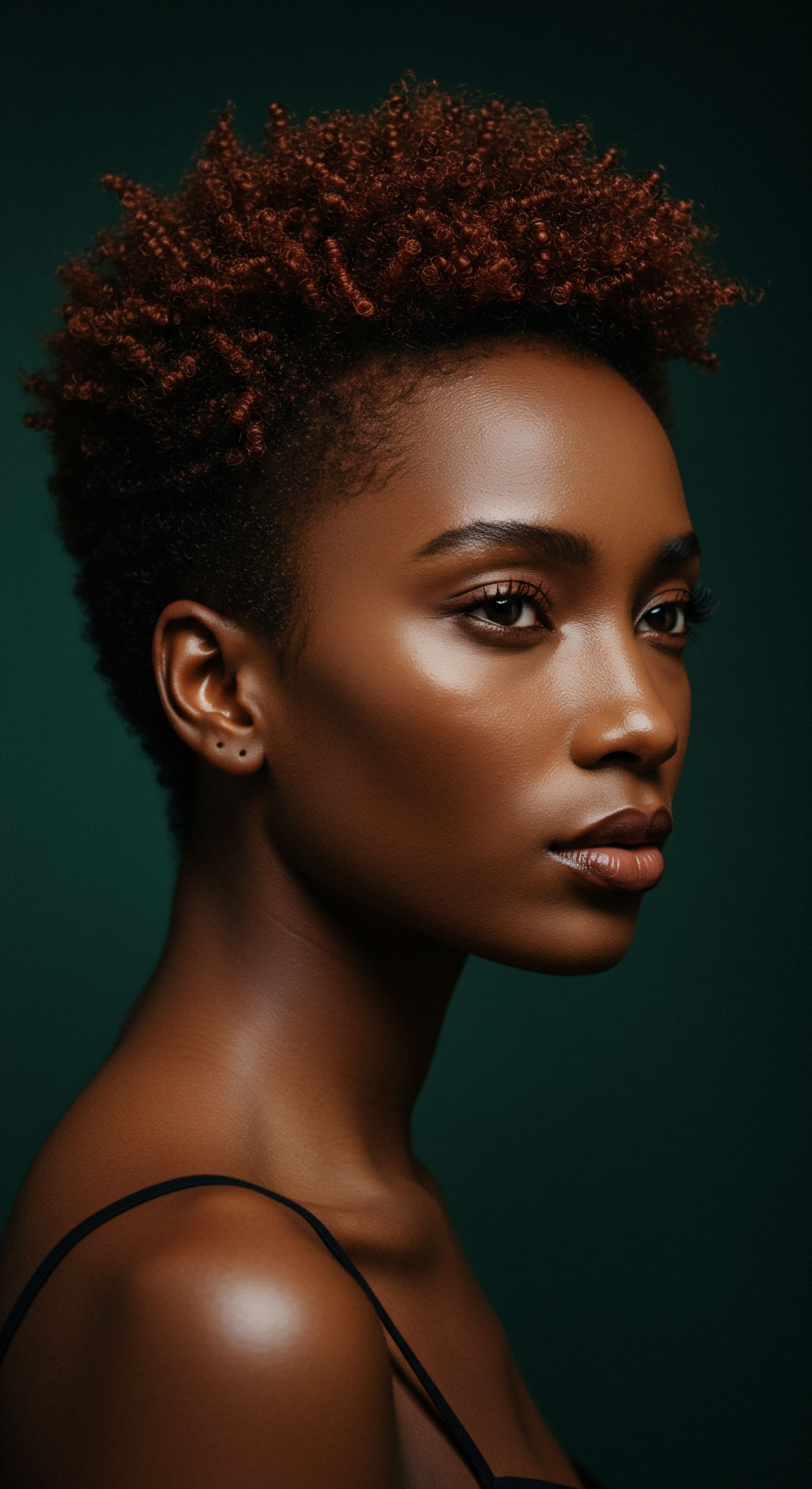
Societal Status and Hair Adornment
Beyond biological considerations, hair care and styling were deeply embedded in the social fabric of ancient societies. Hair was a potent symbol, conveying status, age, marital standing, and tribal identity.
In ancient Egypt, elaborate wigs and headdresses, often adorned with gold and precious stones, were reserved for pharaohs and the elite, signifying their royal and divine power. The complexity and ornamentation of one’s hairstyle were direct reflections of social rank. In many African societies, the skill involved in creating intricate braided styles could take days, and the time and resources required to maintain them often denoted wealth.
The impact of colonization and slavery profoundly disrupted these traditions. Enslaved Africans were often stripped of their traditional hair care practices and forced to conform to Eurocentric beauty standards, with their hair sometimes shaved or subjected to harsh treatments. This suppression underscores the deep cultural significance of hair as a marker of identity and resistance. Despite oppression, hair braiding persisted as a form of cultural preservation and communication, with enslaved women sometimes using braid patterns to map escape routes.

Can Traditional Hair Care Practices Offer Solutions for Modern Hair Concerns?
The insights from traditional hair care practices hold considerable relevance for contemporary concerns, particularly for those navigating the unique needs of textured hair. The emphasis on gentle cleansing, consistent moisture, and protective styling, so prevalent in the past, directly addresses common challenges like dryness, breakage, and scalp irritation.
Consider the traditional Indian practice of regular scalp massages with warmed oils. A 2016 study, though conducted on Japanese males, showed that 4 minutes of scalp massage per day for 24 weeks increased hair growth. While this specific study was not on textured hair, the underlying principle of increased blood circulation and nutrient delivery to the scalp holds universal promise for hair health.
This points to the efficacy of a seemingly simple, time-honored ritual. The wisdom here transcends specific hair types, highlighting the body’s capacity for self-repair when given the right conditions.
This data point, often overlooked in broader discussions of hair growth, speaks to the profound yet gentle power of traditional, consistent care. It suggests that many of the answers to modern hair woes may lie not in novel chemical compounds, but in the sustained application of practices rooted in ancestral wisdom.
The long-standing tradition of protective styles, such as braids and locs, also provides a blueprint for modern hair health. By minimizing daily manipulation and exposure to environmental stressors, these styles allow hair to retain length and reduce breakage. This enduring strategy, refined over millennia, offers a tangible path to healthier, more resilient textured hair in any era.

The Spiritual and Symbolic Dimensions of Hair
For many ancient cultures, hair was not merely a physical attribute; it was a conduit to the spiritual realm, a repository of wisdom, and a symbol of life force.
Among Native American tribes, hair was considered sacred, an extension of one’s thoughts, prayers, dreams, and history. Long hair was often seen as a source of strength and wisdom, connecting individuals to the earth and ancestors. The act of braiding could represent the unity of body, mind, and spirit, or even past, present, and future. Cutting hair might signify a new beginning or a period of mourning, with the severed strands treated with reverence, sometimes burned ceremonially.
In Yoruba cosmology, hair was considered sacred, a medium of spiritual energy linking individuals to ancestors and deities. Ancient Egyptians believed certain hairstyles and adornments offered spiritual protection. These beliefs instilled a deep respect for hair, shaping practices that honored its perceived spiritual power, leading to meticulous care and adornment. This perspective elevates hair care beyond superficial grooming, positioning it as a sacred practice.
This rich historical and cultural context invites us to consider our own relationship with our hair with greater reverence. The care practices of the past were not just about cleanliness or beauty; they were about identity, community, and a profound connection to something larger than oneself.

Reflection
As we close this exploration into the ancient rhythms of textured hair care, a quiet realization settles ❉ the wisdom of the past is not a relic to be merely observed, but a gentle echo inviting us to listen. Our ancestors, without the aid of laboratories or Advanced scientific instruments, cultivated an intuitive, profound understanding of hair’s inherent needs. They learned through observation, through generations of lived experience, and through a deep reverence for the natural world. Their practices, from the gentle cleansing of yucca root to the protective artistry of braids, were born of necessity, yet blossomed into expressions of identity, community, and spirit.
The journey through history reveals that the quest for healthy, vibrant textured hair is not a modern invention, but a timeless pursuit, continually shaped by culture, environment, and an enduring connection to our roots. May this understanding inspire a renewed appreciation for the delicate dance of our own strands, guiding us toward care that is both knowledgeable and deeply respectful.

References
- Achebe, C. (1958). Things Fall Apart. William Heinemann.
- Tharps, L. L. & Byrd, A. (2001). Hair Story ❉ Untangling the Roots of Black Hair in America. St. Martin’s Press.
- Byrd, A. & Tharps, L. L. (2014). Hair Story ❉ Untangling the Roots of Black Hair in America (Revised and Updated). St. Martin’s Griffin.
- Walker, A. (1982). The Color Purple. Harcourt Brace Jovanovich.
- Hooks, B. (1992). Black Looks ❉ Race and Representation. South End Press.
- Patel, M. et al. (2016). A study of the effect of scalp massage on hair growth. Journal of Dermatological Treatment, 27(1), 89-91.
- Gabourey, S. (2015). Hair ❉ A Cultural History of Hair Fashion in Ancient and Modern Times. Bloomsbury Publishing.
- Mercer, K. (1994). Welcome to the Jungle ❉ New Positions in Cultural Studies. Routledge.
- Opoku, A. A. (1978). African Traditional Religion ❉ An Introduction. Westminster Press.
- Singh, S. (2007). Ayurvedic Hair Care ❉ Ancient Secrets for Healthy Hair. Lotus Press.
- Ross, L. (2014). African American Women and Hair ❉ A History of Stylistic Change. Routledge.